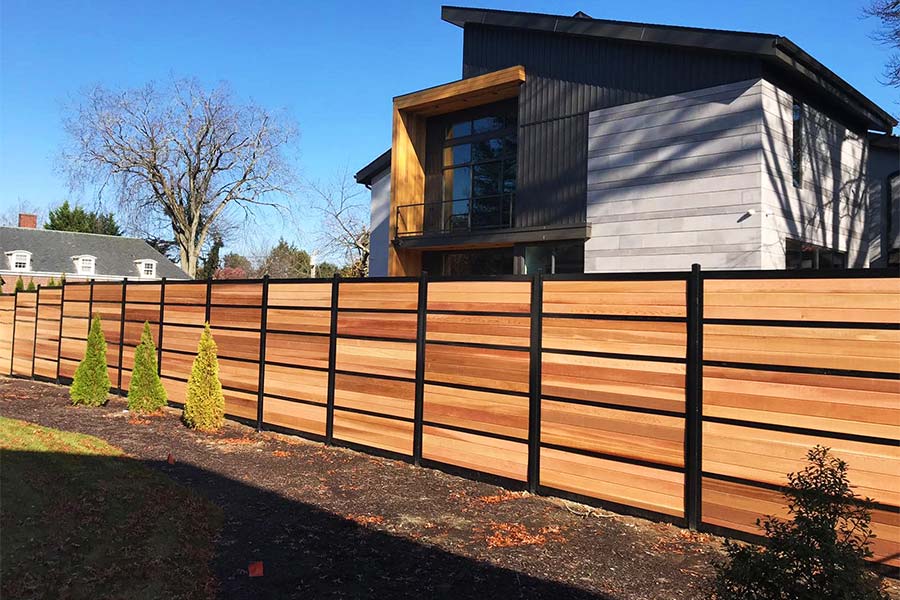All Categories
Featured

While regular upkeep can expand the life of your fence, there comes a time when fixings no much longer are enough, and it's time to take into consideration substitute. Right here are some key indicators that your fencing might need to be changed.
- Noticeable Damage or Use. Among one of the most noticeable signs that your fence is nearing the end of its life expectancy shows up damage. This can consist of fractures, splits, warping, or busted areas. Wooden fences are particularly vulnerable to splitting or splintering gradually, while vinyl fencings can create fractures. Steel fencings, like chain-link or functioned iron, can likewise become damaged with corrosion or bent posts. If the damage is extensive or structural, repairing specific sections may not be sufficient, and replacing the fencing comes to be necessary.
- Rot and Decay. If you notice that parts of your fence really feel soft to the touch or if you see mold or fungi growing, it's an indication of rot. Minor rot can sometimes be fixed, considerable degeneration, specifically near the base of fence articles, can endanger the stability of the whole fence.
- Leaning or Tilting. A leaning fencing is a clear sign that something is wrong with its structural support. Gradually, posts may shift as a result of dirt erosion, water damages, or even origin development from nearby plants. While small tilting can often be remedied by straightening the blog posts and safeguarding them, comprehensive leaning usually suggests that the blog posts have been harmed past repair. It might be time to change the damaged areas or the entire fencing. if the fencing proceeds to lean in spite of efforts at modification.
- Corrosion or Corrosion (For Steel Fences) Especially one made of wrought iron or corrosion, rust or steel can damage its structure if you have a steel fence. While minor rust can frequently be gotten rid of and dealt with, considerable corrosion that endangers the fence's stability is an indication that substitute is required. If the rust has spread considerably or damaged the metal, it can make the fencing unsightly or risky. It's much better to replace a heavily corroded metal fencing than to continue attempting repair services.
- Bug Infestations. Wooden fencings are a typical target for bugs like termites, woodworker ants, and rodents. These pests can cause considerable damages by tunneling into the timber and deteriorating its framework. If you observe tiny openings, sawdust piles, or actual pests staying in your fence, it's necessary to deal with the problem right away. In situations where the damage is serious, the affected fencing articles or boards may need to be changed to bring back the fencing's security.
- Problem Keeping the Fence. If you find on your own frequently making fixings to the very same areas of your fence, maybe an indicator that the fence is past its prime. Fence upkeep can be lengthy and pricey, particularly when fixings are no longer effective. It's time to think about replacing the fencing altogether if you're spending more cash on patching up old sections than you would on a full substitute. A brand-new fence will give even more long-lasting worth and lower the frequency of fixings.
- Age of the Fence. While the life-span of a fencing can differ depending on the material, area, and weather conditions, a lot of fences last in between 15 and 20 years. If your fencing is coming close to or exceeding its expected life expectancy and showing signs of wear and tear, it may be time to replace it.
- Obsolete Look. In some cases, a fence simply comes to be out-of-date, no longer matching the style or needs of your building. If your fencing no longer matches your residential or commercial property or fulfills your requirements-- such as privacy, safety and security, or aesthetics-- it may be time to consider a substitute.
- Fence No Longer Offers Its Function. Your demands for a fencing can develop gradually. If your original fence was created for design or to keep pet dogs consisted of, yet currently you need much more privacy or protection, a replacement could be required. A fence that no longer offers its designated purpose is not just much less reliable but can additionally interfere with the general worth of your property. In such cases, changing the fencing with one that fulfills your present needs is the very best selection.

Final thought. A fencing is a vital part of your home's outside, supplying safety and security, style, and personal privacy. Like any framework, it will eventually reveal indications of aging or damages. If you see any one of the indicators noted above-- noticeable damages, rot, leaning, pest infestations, or an outdated appearance-- it might be time to replace your fence. Changing an old, damaged fence can boost the total value of your residential property, improve safety, and give your lawn a fresh appearance. By maintaining an eye out for these indicators, you can make an informed decision concerning when it's time to invest in a brand-new fence.
Latest Posts
Unlock WyHy FCU – Top Benefits for Your Money Goals
Published May 19, 25
2 min read
Discover WyHy Federal Credit Union – Essential Perks for Your Money Goals
Published May 18, 25
1 min read
Seamless Aluminum Gutters: The Smart Selection for Your Home
Published May 17, 25
1 min read
More
Latest Posts
Unlock WyHy FCU – Top Benefits for Your Money Goals
Published May 19, 25
2 min read
Discover WyHy Federal Credit Union – Essential Perks for Your Money Goals
Published May 18, 25
1 min read
Seamless Aluminum Gutters: The Smart Selection for Your Home
Published May 17, 25
1 min read